Natural killer cells are one of the ways our body fights off cancer, and visiting a forest can induce a significant increase in both their numbers and their activity.
I’ve previously shown how exposure to nature can have self-reported psychological benefits, but there was a dearth of data on changes in objective measurements, so I was excited to see this paper on the effects of forest bathing, “a traditional practice characterized by visiting a forest and breathing its air,” on levels of the stress hormone cortisol in the participants’ saliva.
The level of cortisol in our saliva is considered an indicator of our stress level, and study participants’ salivary cortisol levels were significantly lower after walking in a forest or even just hanging out in one (“forest watching”), compared to walking or just being in a city, as you can see at 0:49 in my video Boosting Anticancer Immunity with Forest Bathing.
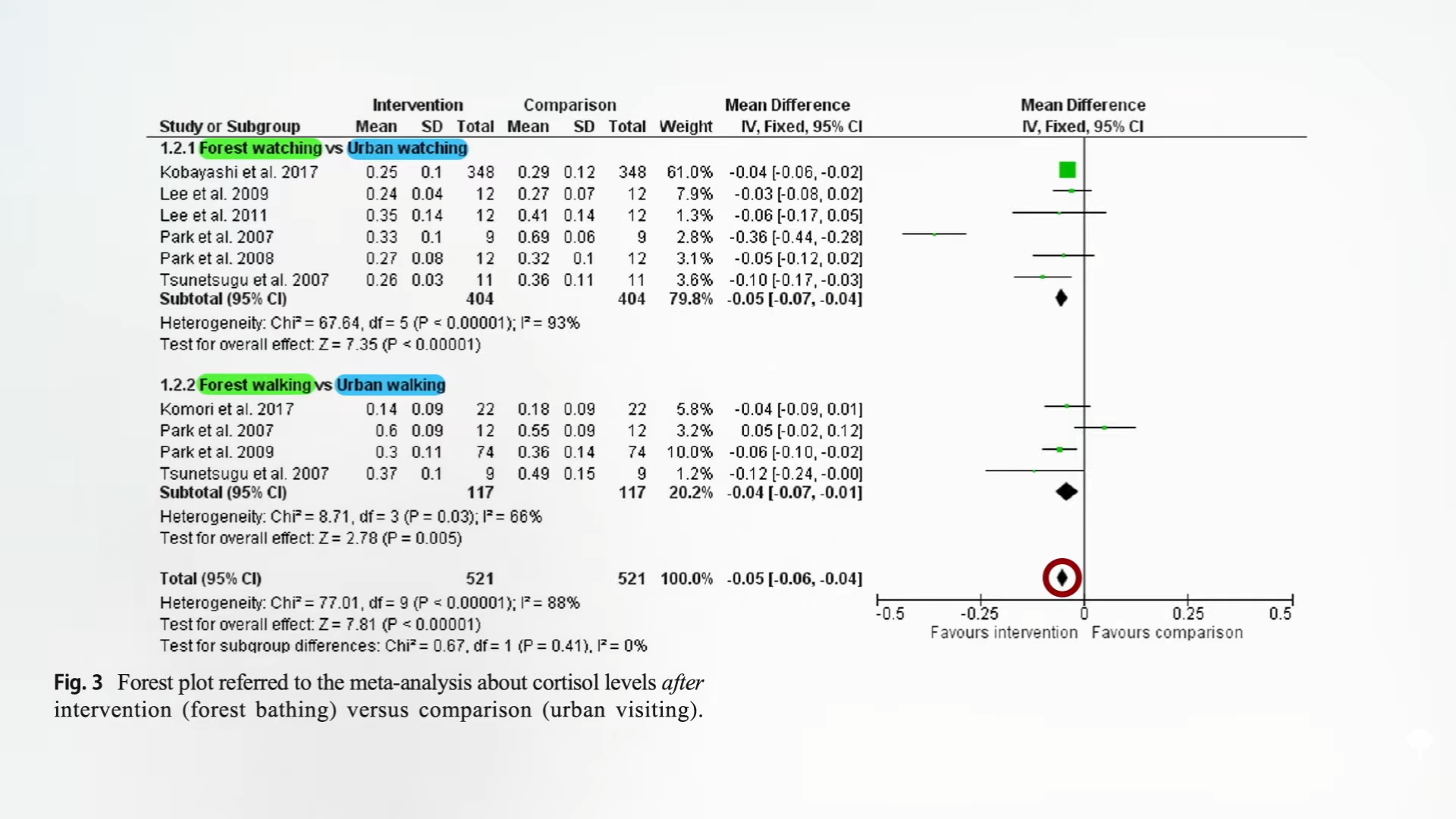
However, the same effect was found before they went to the forest, too. Indeed, “forest bathing, in particular forest watching, was associated with significantly lower cortisol levels both before and after this practice if compared with visiting an urban area.” Therefore, it appears that just the thought of spending time in a forest relieves stress. So, “when comparing the effects of forest bathing versus urban visiting, the anticipated placebo effect…may play a more important role in influencing cortisol [stress] levels than the actual experience” of being in the forest. I was ready to dismiss this as just another nebulous psychological effect until I read this: “Studies on the effects of ‘Shinrin-yoku’ [forest bathing] on the immune function showed that visiting a forest can induce a significant increase in the number and activity of natural killer (NK) cells,” one of the ways our body fights off cancer. That got my attention.
It all started with this study: Twelve men were taken on a long weekend trip to walk in the forest, and nearly all of them (11 out of 12) showed higher natural killer cell activity afterward. It wasn’t just a little increase either; they had about a 50 percent increase in NK cell activity after the trip compared to before they went to the forest, as you can see at 2:00 in my video.
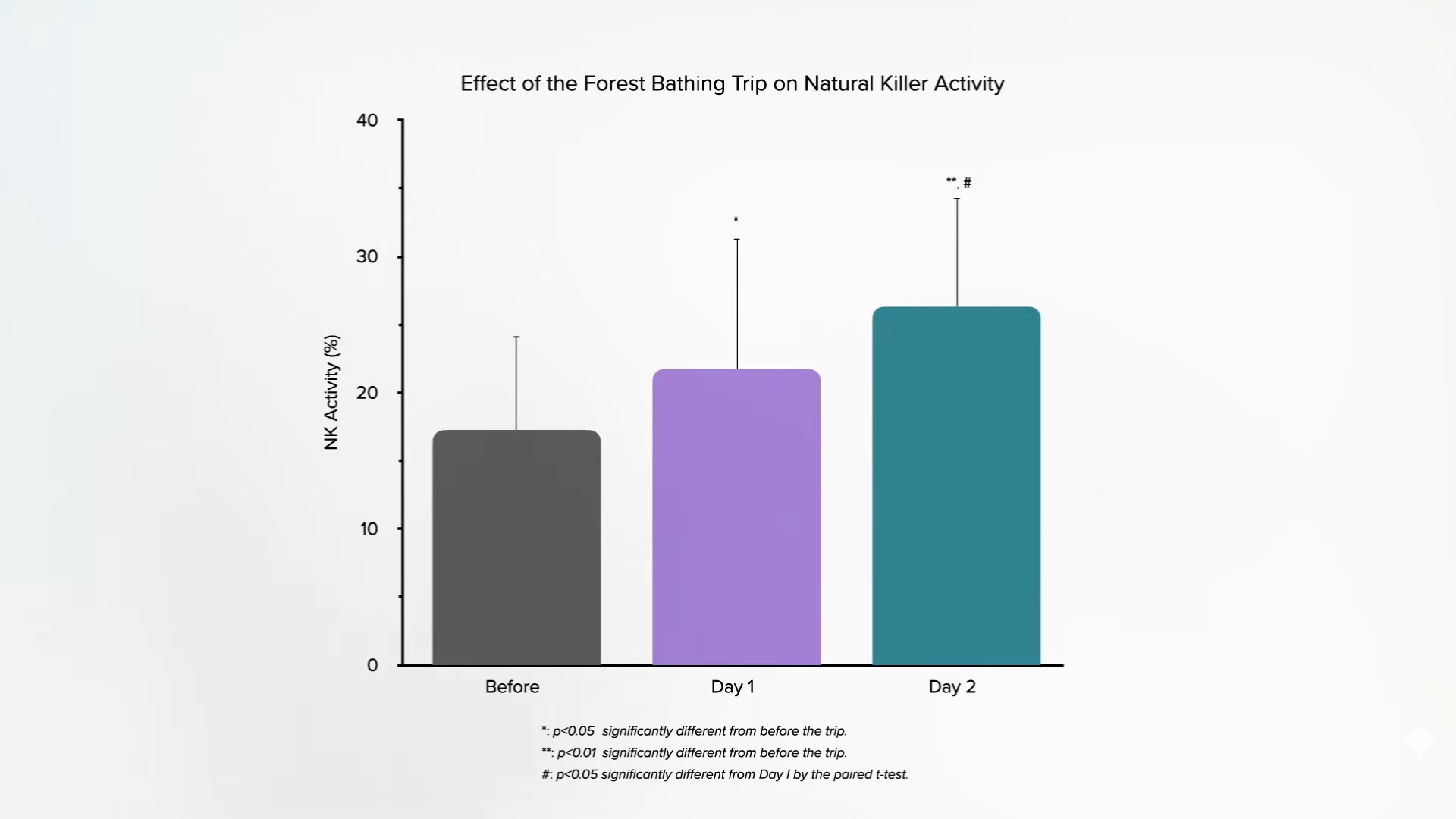
Now, exercise alone can affect immune function, but “there were no significant differences in walking steps before and during the trip.” The study participants were just walking in a forest instead. However, they were taken on a trip somewhere, which introduced other variables, so what about randomizing them to go on a city trip versus a forest trip? If there were some special forest effect, how long would it last? Do you have to walk in the forest every day? Before jumping into all that, let’s first see if it works in women, too.
This study had the same kind of set-up, and the same kind of results: a significant boost in natural killer cell activity from walking in the woods. What’s more, this time, the participants were retested a week later, and their natural killer cell activity was still up. When they were retested a month after the trip their levels were back to baseline, as you can see at 2:45 in my video.
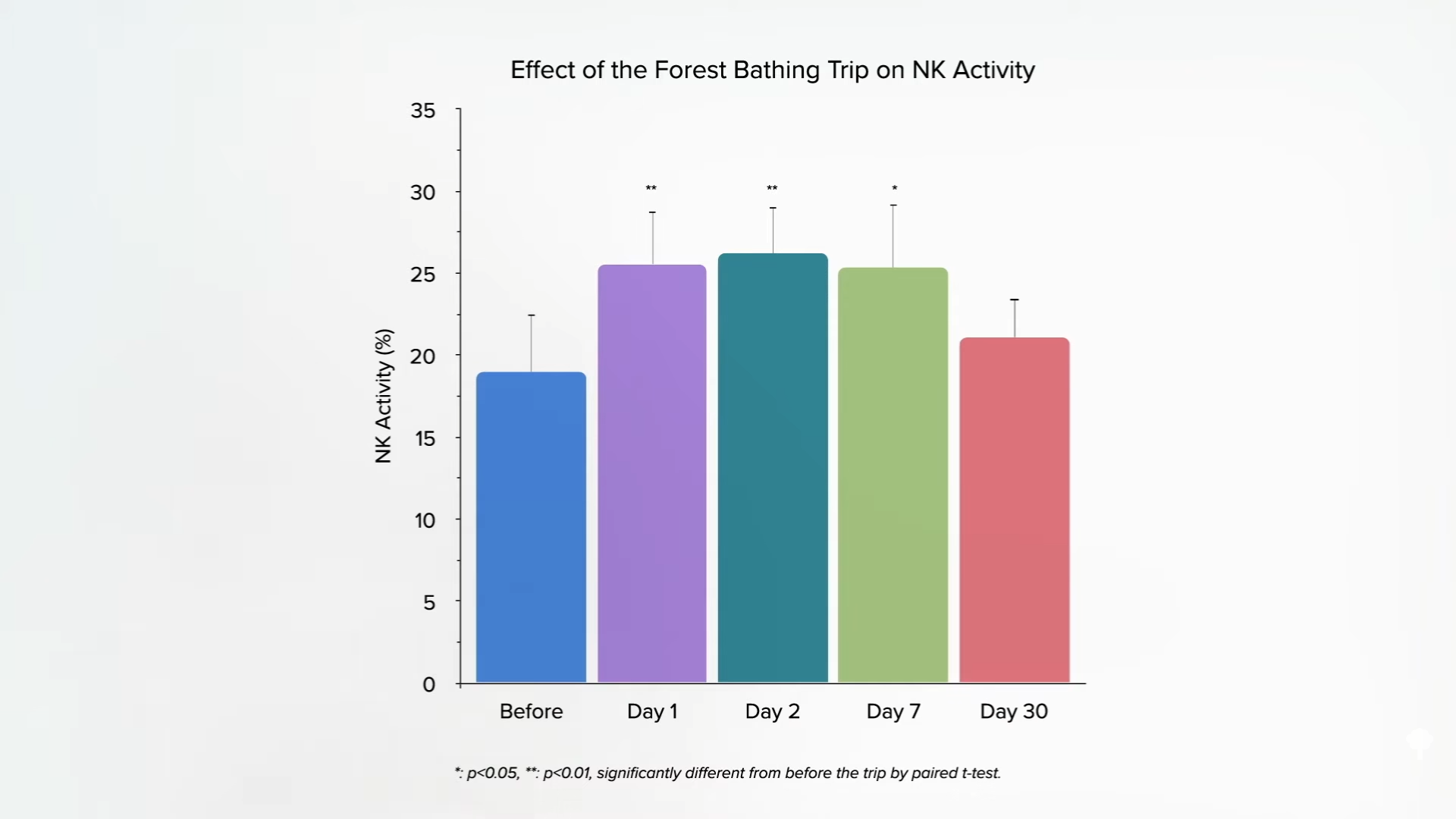
So, walking in the woods once a week should do it, but the study involved a multi-day trip. Who can go to the forest all weekend, every weekend? How about just a day trip? The title gives it all away: “A Day Trip to a Forest Park Increases Human Natural Killer Activity and the Expression of Anti-Cancer Proteins in Male Subjects.” The same results and the same big jump measured the day after the trip compared to before and with the same staying power, as you can see at 3:08 in my video. And, natural killer cell activity was still boosted a week later. “This suggests that if people visit a suburban forest park once a week on a day trip, they may be able to maintain increased NK activity” and a boost in anticancer immune function.
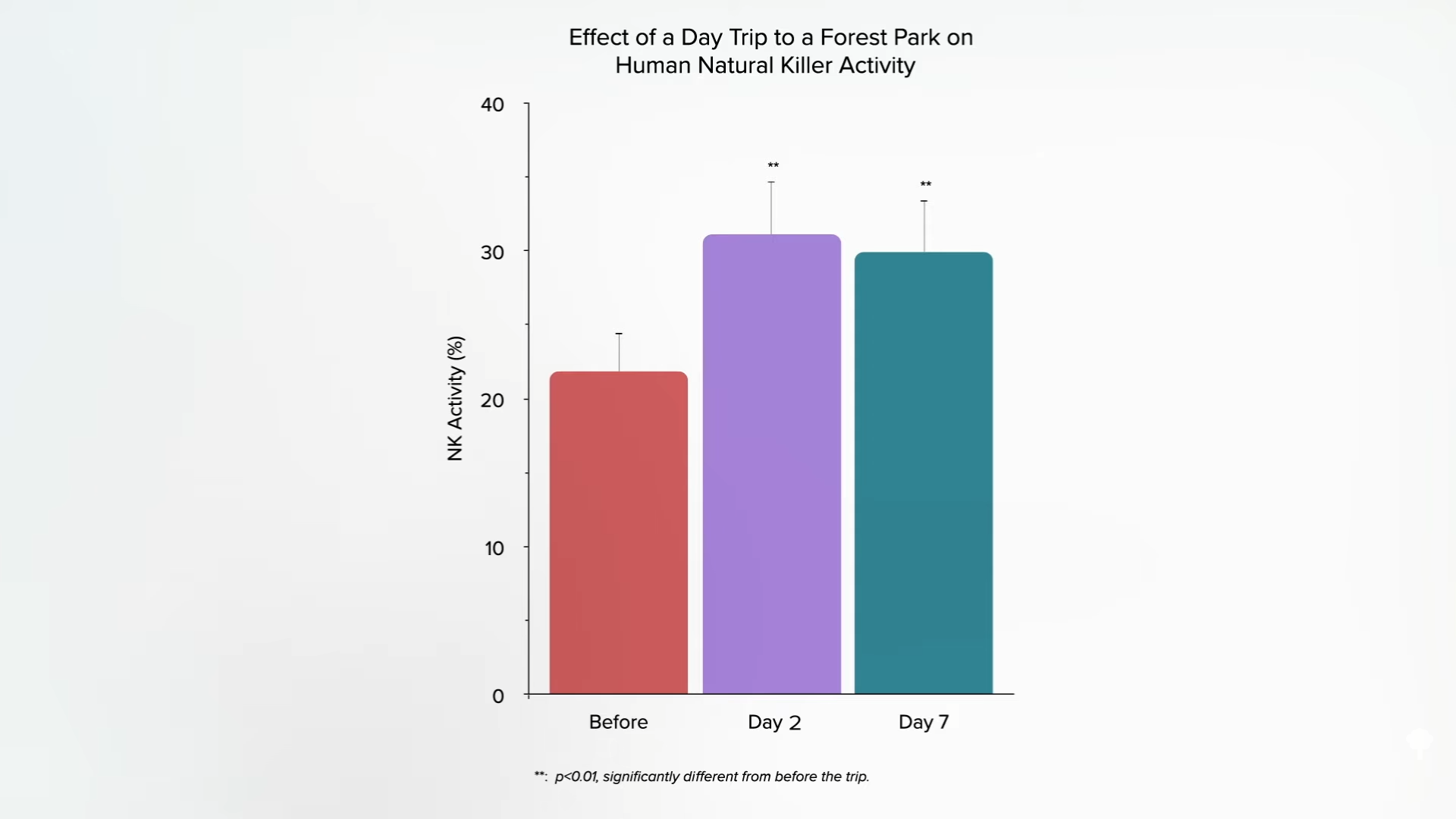
I’m still not convinced, though. How can you attribute the benefit to the forest itself, when all you have are before and after data? To make the case that nature had anything to do with it, you’d need a control group of study participants who took the same kind of trip but went somewhere else instead. And here we go. Again, the study title says it all: “Visiting a Forest, but Not a City, Increases Human Natural Killer Activity and Expression of Anti-Cancer Proteins.” By the end of the forest trip, the participants experienced a boost of 80 percent in NK activity after forest bathing, compared to only a 10 percent bump for the city walkers, as shown below and at 3:58 in my video.
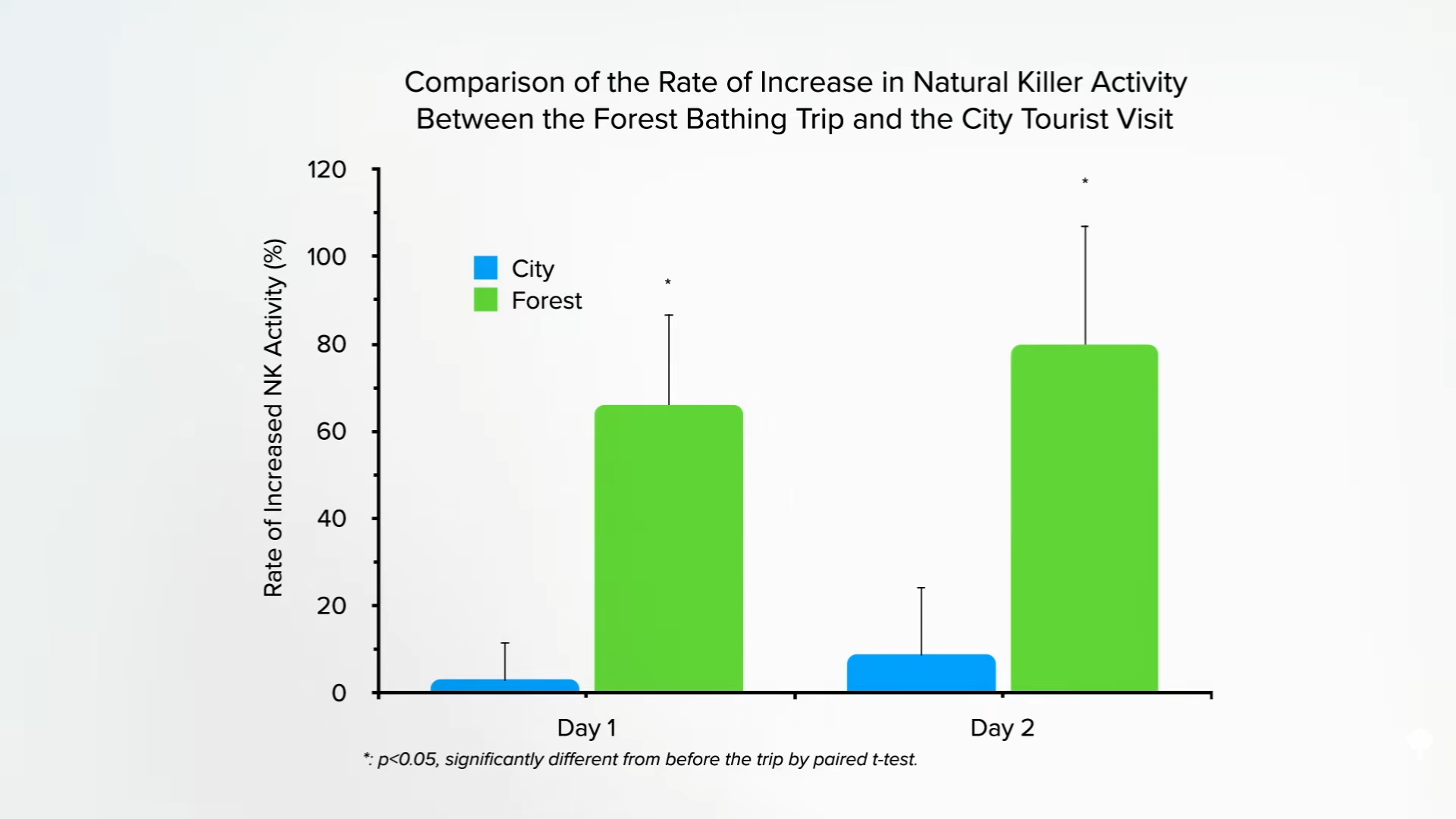
Both trips were matched for physical activity, alcohol, and sleep, too—other factors and behaviors that can affect immune function. So, we’ve got confirmation of boosted immunity, but only on the forest trip, “indicating that forest bathing does indeed enhance human NK activity.” Moreover, the researchers found that “the increased NK activity and numbers of NK cells induced by a forest bathing trip lasted more than 7 days, even 30 days, after the trip.” As you can see below and at 4:26 in my video, NK activity was still up a week later and even a bit up a month later. “This suggests that if people visit a forest once a month, they may be able to maintain increased NK activity. This may be important in health promotion and preventive medicine.”
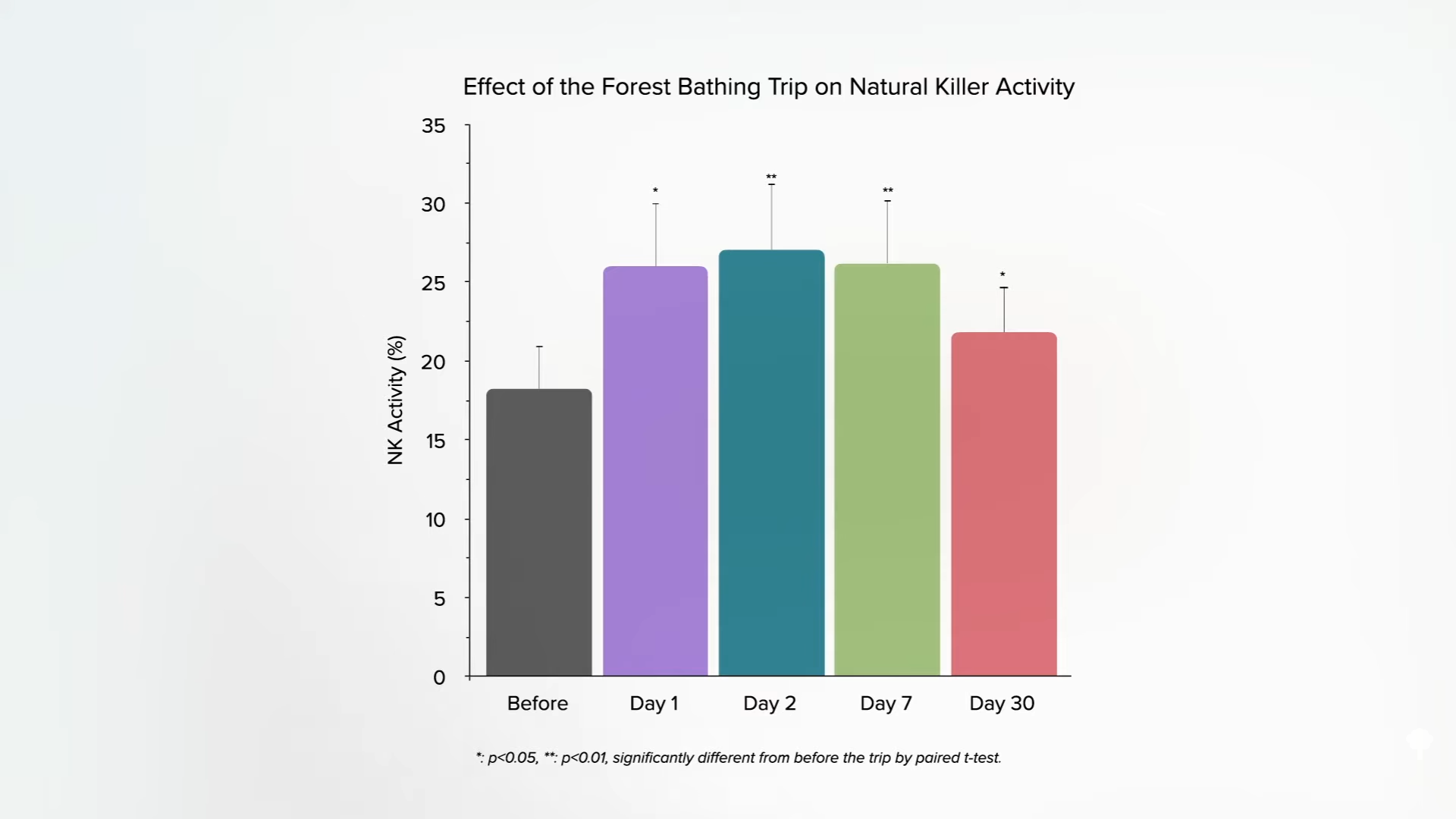
Now that we know that forest bathing induces a real effect, the next question is, Why? What is it about forests that give us the boost? (You can imagine Big Pharma wondering if it can be made into a pill.) We’ll find out next.
The video I mentioned at the start is Are There Health Benefits of Spending Time in Nature?.
Stay tuned for the follow-up post: Why Does Forest Bathing Boost Natural Killer Cell Function?.
For other ways to improve immune function, check out related posts below.

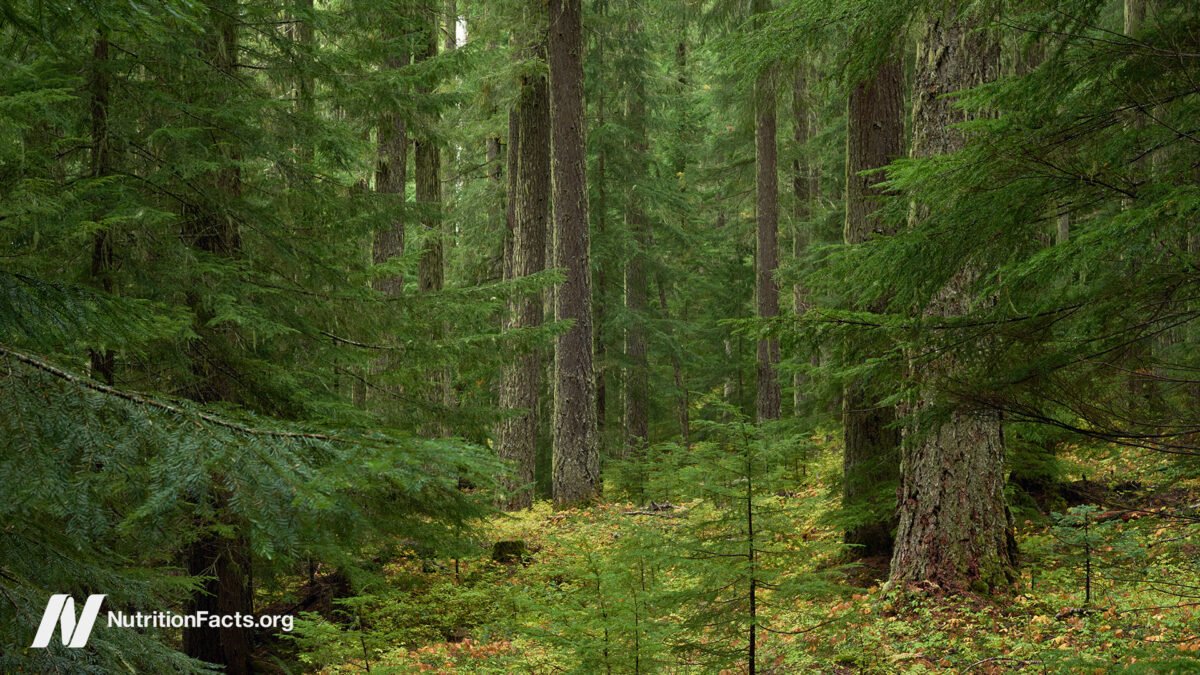
Recent Comments